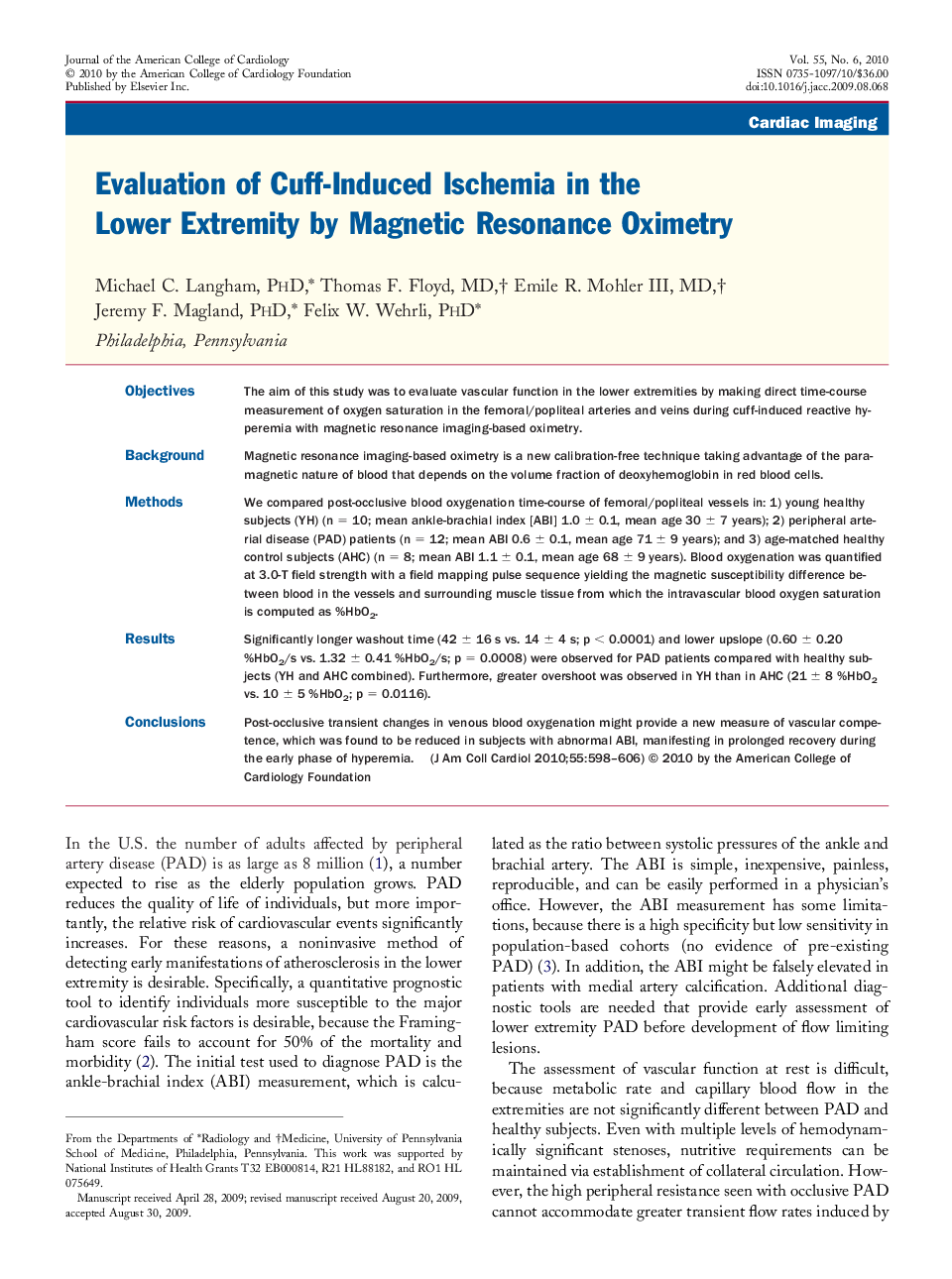| Article ID | Journal | Published Year | Pages | File Type |
|---|---|---|---|---|
| 2951573 | Journal of the American College of Cardiology | 2010 | 9 Pages |
ObjectivesThe aim of this study was to evaluate vascular function in the lower extremities by making direct time-course measurement of oxygen saturation in the femoral/popliteal arteries and veins during cuff-induced reactive hyperemia with magnetic resonance imaging-based oximetry.BackgroundMagnetic resonance imaging-based oximetry is a new calibration-free technique taking advantage of the paramagnetic nature of blood that depends on the volume fraction of deoxyhemoglobin in red blood cells.MethodsWe compared post-occlusive blood oxygenation time-course of femoral/popliteal vessels in: 1) young healthy subjects (YH) (n = 10; mean ankle-brachial index [ABI] 1.0 ± 0.1, mean age 30 ± 7 years); 2) peripheral arterial disease (PAD) patients (n = 12; mean ABI 0.6 ± 0.1, mean age 71 ± 9 years); and 3) age-matched healthy control subjects (AHC) (n = 8; mean ABI 1.1 ± 0.1, mean age 68 ± 9 years). Blood oxygenation was quantified at 3.0-T field strength with a field mapping pulse sequence yielding the magnetic susceptibility difference between blood in the vessels and surrounding muscle tissue from which the intravascular blood oxygen saturation is computed as %HbO2.ResultsSignificantly longer washout time (42 ± 16 s vs. 14 ± 4 s; p < 0.0001) and lower upslope (0.60 ± 0.20 %HbO2/s vs. 1.32 ± 0.41 %HbO2/s; p = 0.0008) were observed for PAD patients compared with healthy subjects (YH and AHC combined). Furthermore, greater overshoot was observed in YH than in AHC (21 ± 8 %HbO2vs. 10 ± 5 %HbO2; p = 0.0116).ConclusionsPost-occlusive transient changes in venous blood oxygenation might provide a new measure of vascular competence, which was found to be reduced in subjects with abnormal ABI, manifesting in prolonged recovery during the early phase of hyperemia.
